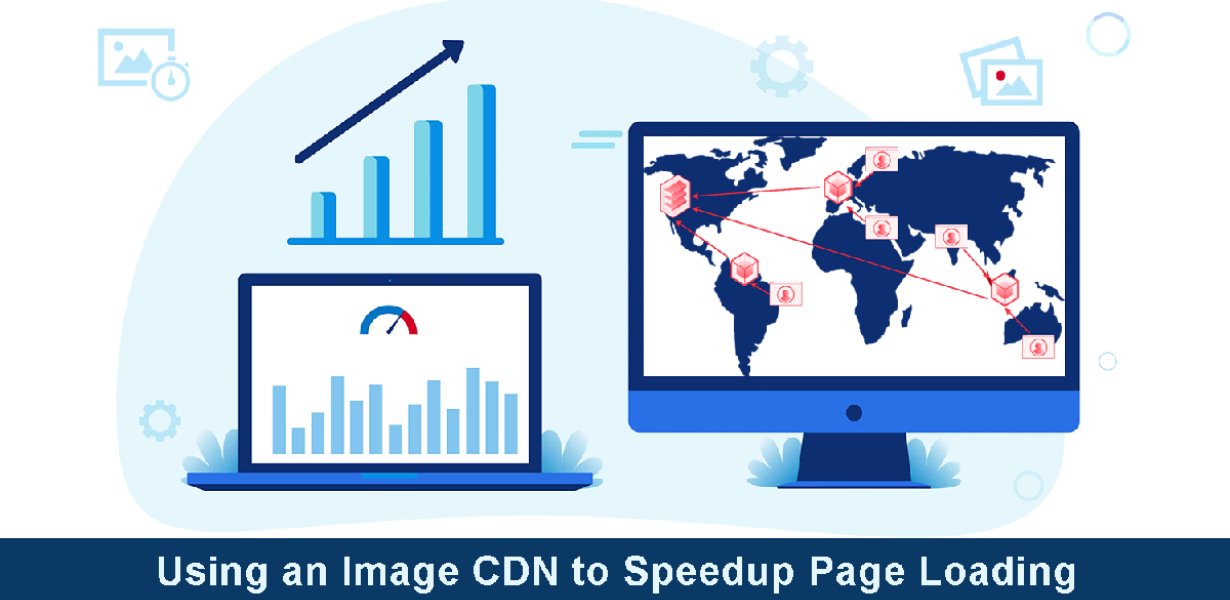
Revolutionizing Image Delivery: CDN-Based Responsive Images for Instant Loading Times
- Post
- August 7, 2023
- Mobile & Responsive, Responsive Images, Web Design
- 0 Comments
In the fast-paced digital world, where user experience is paramount, website loading speed plays a pivotal role in determining success. Slow-loading images have long been a thorn in the side of web developers and users alike. However, there’s a game-changer in town that is revolutionizing image delivery: CDN-based responsive images. In this blog, we explore the power of responsive images and how they contribute to instant loading times, offering an unparalleled user experience.
Understanding Responsive Images
Responsive images refer to images that adapt to various screen sizes and resolutions without compromising quality. In today’s multi-device landscape, where users access websites on smartphones, tablets, laptops, and desktops, responsive images have become essential for optimal performance. By utilizing responsive images, websites can cater to every user, providing a seamless experience regardless of the device being used.
The Role of CDNs in Image Delivery
Content Delivery Networks (CDNs) have been instrumental in improving website performance worldwide. These geographically distributed servers work in harmony to deliver content to users from the nearest server location. CDNs significantly reduce latency and enhance website loading times. When integrated with responsive images, CDNs take performance to the next level, ensuring lightning-fast image delivery.
Benefits of CDN-Based Responsive Images
Enhanced Loading Times: By leveraging CDNs, images load from the server nearest to the user, reducing the distance data needs to travel and resulting in faster loading times.
Improved User Experience: With instant image loading, users no longer have to wait for images to load, leading to a seamless and enjoyable browsing experience.
Better SEO Rankings: Search engines, including Google, consider website loading speed as a ranking factor. CDN-based responsive images can positively impact SEO, helping your website climb search engine rankings.
Reduced Bandwidth Usage: Responsive images help optimize bandwidth usage by delivering images in the right format and size based on the user’s device, resulting in cost savings for website owners.
Mobile-Friendly Websites: As mobile devices continue to dominate web traffic, responsive images play a crucial role in making websites mobile-friendly and accessible to all users.
Implementing CDN-Based Responsive Images
To harness the benefits of CDN-based responsive images, follow these essential steps:
1.Image Compression and Optimization
Before uploading images to your website, compress and optimize them to reduce file sizes without compromising quality. Use image formats like WebP, JPEG 2000, or JPEG XR, which offer better compression and support for responsive designs.
2.Leveraging srcset Attribute
The “srcset” attribute is a key component of responsive images. It allows you to provide multiple image sources, each tailored to specific device resolutions. Browsers can then select the appropriate image, optimizing loading times.
Using the sizes Attribute
Accompany the “srcset” attribute with the “sizes” attribute to specify the image’s display size relative to the viewport width. This ensures that the correct image size is delivered to different devices, further enhancing user experience.
Enabling CDN Integration
Select a reliable CDN provider and integrate it with your website. Most CDNs offer simple integration through plugins or content management systems, making the process hassle-free.
Testing and Monitoring
Regularly test your website’s loading speed and monitor performance metrics. Address any bottlenecks promptly to ensure consistent and optimal user experiences.
Common Challenges and Solutions
“Blurry” Images on Certain Devices
Solution: Ensure that your images have high resolution and are correctly sized for different screen resolutions using the “srcset” and “sizes” attributes.
Compatibility Issues with Older Browsers
Solution: Provide a fallback image using the “img” element’s “src” attribute for browsers that do not support responsive images.
Large Image File Sizes
Solution: Use image compression tools and formats like WebP to reduce image file sizes without compromising quality.
Complex Responsive Design Requirements
Solution: Work with experienced web developers and designers who can handle intricate responsive design challenges effectively.
Website Performance Fluctuations
Solution: Monitor your CDN’s performance regularly and switch to a more reliable CDN if necessary.
Final Words
In today’s hyper-connected digital landscape, delivering an exceptional user experience is crucial for online success. CDN-based responsive images present a game-changing solution for website owners looking to optimize loading times and engage users effectively. By embracing this innovative approach, your website can stand out from the competition, improve SEO rankings, and foster higher user satisfaction. Embrace the power of CDN-based responsive images today, and elevate your website to new heights of performance and user delight.
Commonly Asked Questions
Q1. How do responsive images contribute to faster loading times?
Responsive images adapt to different screen sizes and resolutions, reducing the need for unnecessary data transfers. When integrated with a CDN, images load from servers closer to the user, ensuring instant loading and faster website performance.
Q2. Which image formats are best for responsive images?
Image formats like WebP, JPEG 2000, and JPEG XR offer superior compression and support for responsive designs, making them ideal choices for delivering optimized images across various devices.
Q3. Are responsive images essential for SEO?
Yes, responsive images positively impact SEO rankings. Faster loading times, which responsive images contribute to, are a crucial ranking factor for search engines like Google.
Q4. Can I use responsive images on all types of websites?
Absolutely! Responsive images benefit all types of websites, regardless of their size or industry. They are particularly crucial for websites that experience significant mobile traffic.
Q5: Do I need technical expertise to implement CDN-Based Responsive Images?
A5: While basic web development knowledge is beneficial, most CMS platforms provide user-friendly tools for easy implementation.




